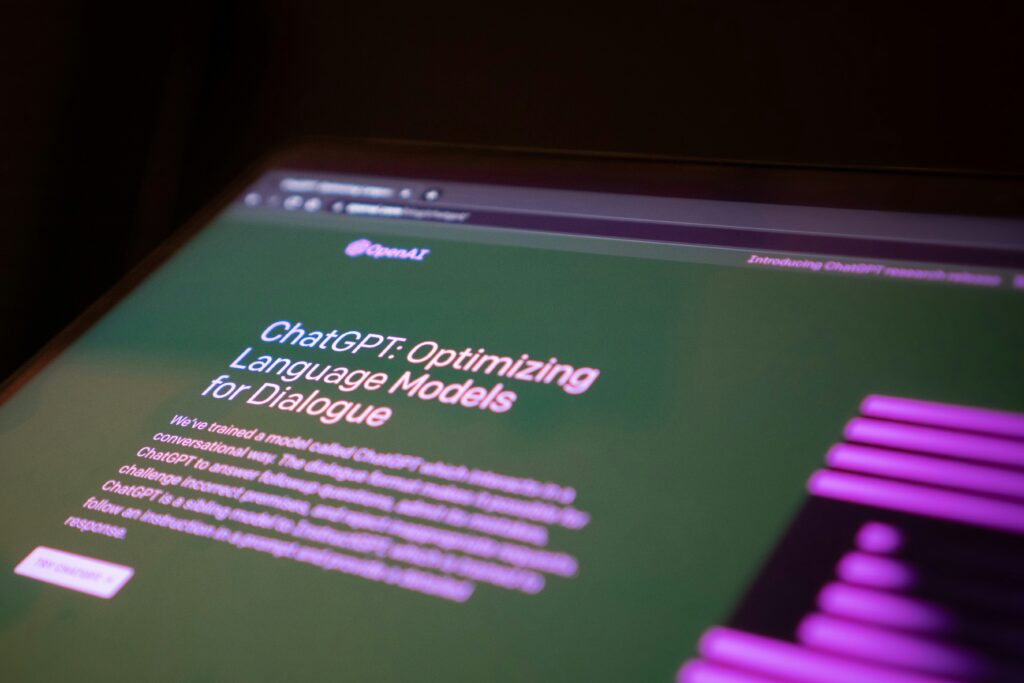The rise of artificial intelligence (AI) has brought a sea of change to numerous fields, and content creation is no exception. AI tools such as ChatGPT and other large language models (LLMs) have made it easier to generate human-like text, leading to their widespread adoption in industries like marketing, education, and journalism. As AI-generated text becomes more prevalent, understanding how to detect it and ensuring its ethical use is more critical than ever. This article will explore the evolution of AI-generated text, the importance of checking for AI writing, how to detect it, and the tools used to ensure content authenticity.
The Evolution of AI-Generated Text
The evolution of AI-generated text has been both rapid and remarkable. From early rudimentary chatbots to the sophisticated LLMs we see today, AI has transformed how content is created. These models, like GPT (Generative Pretrained Transformer) and others, are trained on vast datasets, enabling them to predict words and generate coherent and contextually appropriate sentences. AI writing tools can now assist in creating content for blog posts, research papers, student writing, and even personal experiences.
This shift has led to concerns in fields such as academia and publishing, where the authenticity of content is paramount. As AI tools become more proficient at mimicking human writing, the need for effective detection methods has become essential.
Understanding AI Writing
AI writing, facilitated by machine learning and natural language processing (NLP), is generated using predictive algorithms. These algorithms are trained on a variety of texts, enabling them to produce content that resembles human writing. AI writing tools like ChatGPT and various AI text generators can produce everything from simple answers to detailed reports, offering a significant advantage in content creation. However, while AI-generated content is quick and efficient, it often lacks the personal touch, nuance, and depth that human writers bring.
AI models, including Llama models and others, learn from vast amounts of data. They can generate a piece of text that sounds natural, but often, the text may exhibit specific patterns or tendencies that make it identifiable. This is where AI detection tools come in, helping users and educators distinguish between AI-written and human-authored content.
Why Checking for AI Writing is Important
With the growing prevalence of AI-generated content, it’s becoming increasingly important to verify the originality of writing. In academic settings, AI writing can undermine academic integrity by allowing students to pass off AI-written content as their own. Similarly, in professional fields, AI-written content may raise ethical concerns if it’s not properly disclosed, leading to questions about the authenticity and credibility of the work.
Moreover, search engines and content platforms often prioritize original content, and AI-generated articles may be penalized or flagged for being non-human-authored. Ensuring the authenticity of content is vital not only for maintaining credibility but also for complying with the ethical standards of various industries.
How to Detect AI Writing
Detecting AI writing involves analyzing the text for patterns and inconsistencies typically found in AI-generated content. While AI tools can produce highly coherent sentences, they often lack the variation and natural flow of human-written text. Here are some key methods used to detect AI writing:
- Sentence structure: AI-generated text may follow repetitive sentence structures, whereas human writers tend to vary their sentence length and complexity.
- Abrupt changes in tone or style: AI-generated text can exhibit sudden shifts in style or tone, which may indicate multiple AI prompts were used in creating the text.
- Lack of personal perspective: Human writers often infuse their writing with unique experiences, opinions, and emotions, which are often missing from AI-generated content.
By focusing on these characteristics, human reviewers, in conjunction with AI detection tools, can more easily identify AI-generated content.
AI Detection Tools: An Overview
Numerous AI detection tools have been developed to address the growing need for identifying AI-generated text. These tools use machine learning algorithms to detect patterns commonly found in AI writing. Some of the most widely used AI detection tools include:
- Originality.ai: A tool that not only detects AI-generated content but also functions as a plagiarism checker. It’s popular in both academic and professional settings.
- GPTZero: Designed to detect AI-generated content from models like GPT, it is widely used in educational settings.
- ZeroGPT: A free AI detector that analyzes content to determine whether it was AI-generated, often used to check low-quality AI-generated content.
- ChatGPT Detector: This tool specifically targets content generated by ChatGPT and similar models.
These tools offer a range of options for users to check whether a given text is AI-authored, making them essential for maintaining content authenticity in an era of AI-generated writing.
Key Characteristics of AI-Generated Text
AI-generated content often contains telltale signs that distinguish it from human-written content. Understanding these characteristics can aid in detection:
1. Repetitive patterns: AI-generated content may exhibit repeated sentence structures or word choices, leading to predictable text.
2. Overly structured writing: Unlike human writing, which varies in tone, length, and word choice, AI-generated content may feel more rigid and formulaic.
3. Lack of creativity and emotional depth: AI models are excellent at mimicking human language but struggle with creative storytelling or expressing nuanced emotional experiences.
False Positives and False Negatives in AI Detection
Despite the advancements in AI detection tools, they are not perfect and can sometimes produce false positives or false negatives. A false positive occurs when the tool incorrectly identifies human-written text as AI-generated, while a false negative happens when AI-written text goes undetected.
False positives are particularly concerning in academic settings, where students may face penalties for using AI even when they haven’t. Conversely, false negatives can allow AI-generated text to pass as human-authored, undermining the purpose of the detection tool.
To minimize these errors, AI detection tools must be trained on new data sets and continuously updated to recognize the evolving capabilities of AI writing models.
How AI Detection Models Work
AI detection models work by analyzing text for specific patterns or markers that suggest it was generated by an AI model. These models are trained on large datasets of both human-written and AI-generated content, allowing them to recognize differences in sentence structure, word choice, and flow.
The most advanced AI detection models rely on natural language processing (NLP) techniques, which analyze the grammar, syntax, and linguistic cues within the text. Human writing tends to be more diverse in its use of language, while AI-written text may stick to a more predictable and structured form.
AI Content Checkers in Education
In educational institutions, AI content checkers have become a crucial tool for maintaining academic integrity. With the increasing availability of AI writing tools, students may be tempted to use them for completing assignments or writing essays. However, this practice raises ethical concerns and undermines the learning process.
AI content checkers are used by teachers and professors to verify that student submissions are human-written and original. These tools help educators detect AI-written content and ensure that students are learning and engaging with the material authentically.
AI Detection Tools in Content Creation
In the world of content creation, detecting AI-generated articles and blog posts has become increasingly important. Search engines like Google prioritize original, human-written content, and AI-written content may be penalized if it’s detected.
Content creators are now using AI content detection tools to ensure that their work is authentic and not penalized by search engines. These tools are particularly useful for verifying the originality of web pages, blog posts, and other digital content.
Content and Plagiarism Detection Tools
AI content detection tools often double as plagiarism checkers, allowing users to check whether the text is both AI-generated and copied from existing sources. Plagiarism checkers like Turnitin and Grammarly have incorporated AI detection features to help users verify the authenticity of their work.
These tools are essential for ensuring that content creators, students, and professionals are producing original content that is free from both plagiarism and AI-generated material.
The Role of Sentence Structure and Linguistic Analysis
One of the key indicators of AI-generated text is sentence structure. Human writers tend to vary their sentence length, complexity, and tone throughout their writing. In contrast, AI-generated text often follows a more repetitive and predictable sentence structure.
Linguistic analysis tools can detect these differences by examining the flow and rhythm of the writing. By analyzing how sentences are constructed, these tools can identify whether a piece of text was likely written by a human or generated by an AI model.
Using AI to Detect AI: Advanced Algorithms and Tools
Ironically, AI technology itself is being used to detect AI-generated content. Advanced algorithms are trained on vast datasets to recognize the subtle patterns that distinguish AI-written text from human-authored content. These tools use machine learning techniques to improve their accuracy over time, ensuring that they stay up-to-date with the latest AI models.
As AI-generated text continues to evolve, these detection tools will need to adapt and incorporate new algorithms to keep up with the advancements in AI writing technology.
The Future of AI Detection: Challenges and Opportunities
The future of AI detection presents both challenges and opportunities. As AI writing tools become more sophisticated, detection tools must also evolve to keep pace. One of the biggest challenges will be minimizing false positives and false negatives, ensuring that AI detection tools remain accurate and reliable.
At the same time, the development of more advanced detection models offers opportunities to improve content authenticity and protect academic integrity. As more AI-generated content enters the digital landscape, detection tools will play a crucial role in maintaining the standards of human-written content.
In Conclusion: The Best Way to Detect AI-Written Text
The best way to detect AI-written text is through a combination of advanced detection tools and human judgment. AI detection tools like Originality.ai, GPTZero, and ZeroGPT provide valuable assistance in identifying AI-generated content, but they should be used alongside manual review to ensure accuracy.
As AI technology continues to evolve, the need for effective AI detection tools will only grow. By staying informed about the latest advancements in AI writing and detection, users can ensure that they are producing and consuming authentic, original content.
Related:
Photo by Jonathan Kemper on Unsplash


